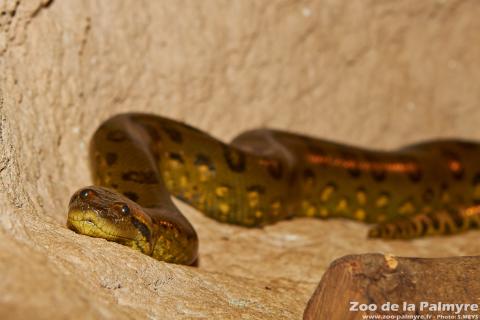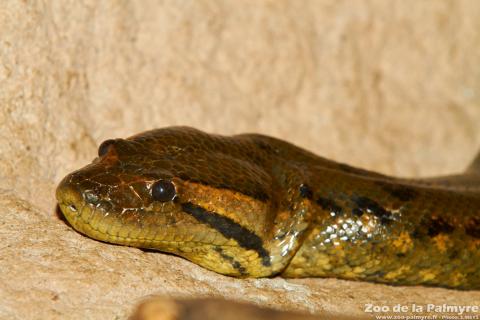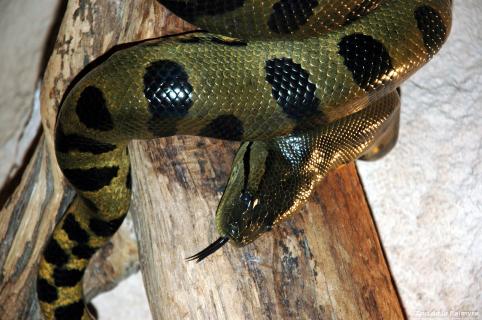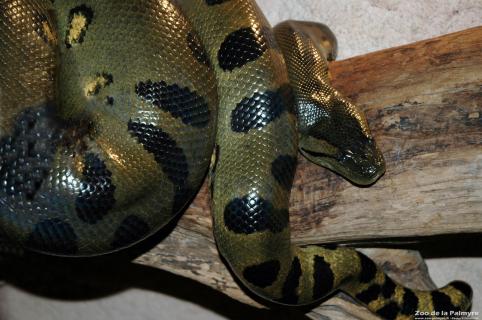Green Anaconda

Green Anaconda

-
Class
Reptilia -
Order
Squamates -
Familly
Boidae
-
 6–9m
6–9m -
 up to 230kg
up to 230kg -
 6–7 months
6–7 months -
 20–40 (ovoviviparous)
20–40 (ovoviviparous) -
 up to 30 years in zoos
up to 30 years in zoos
-
Diet
carnivorous (mammals, birds, fish, reptiles...) -
Habitat
wetlands, forests -
Range
South America -
Population in the wild
Unknown
This is the world’s largest snake as well as one of the longest (after the Reticulated Python). It is also one of the land vertebrates with the greatest size differences between the sexes – females are generally five times heavier than males.
Anacondas are fully adapted to a semi-aquatic lifestyle: their eyes and nostrils, located on the top of their heads, allow them to observe their surroundings and to breathe while the rest of their bodies remain underwater and hence hidden from their prey. Their black and dark-green scales also offer excellent camouflage.
Somewhat nocturnal creatures, Anacondas stalk their prey. They are constrictors: they bite their victims then roll themselves around them to strangle them before swallowing them head-first. Their jaws, joined by highly elastic ligaments, can stretch to a spectacular degree, allowing them to ingest often very large prey such as capybaras and caimans.
In the breeding season, females emit pheromones to attract males. The latter roll themselves around a female’s body, forming a ‘breeding ball’ through which each male tries to find a way towards the female’s cloaca to mate. A group can remain entwined for a month, in the course of which the female mates several times. When mating is complete, the female heads off to find a shelter in mud or in a cave formed in a river bank, where, after incubating the eggs in her genital tracts for 6–7 months, she gives birth to several dozen fully formed young.






